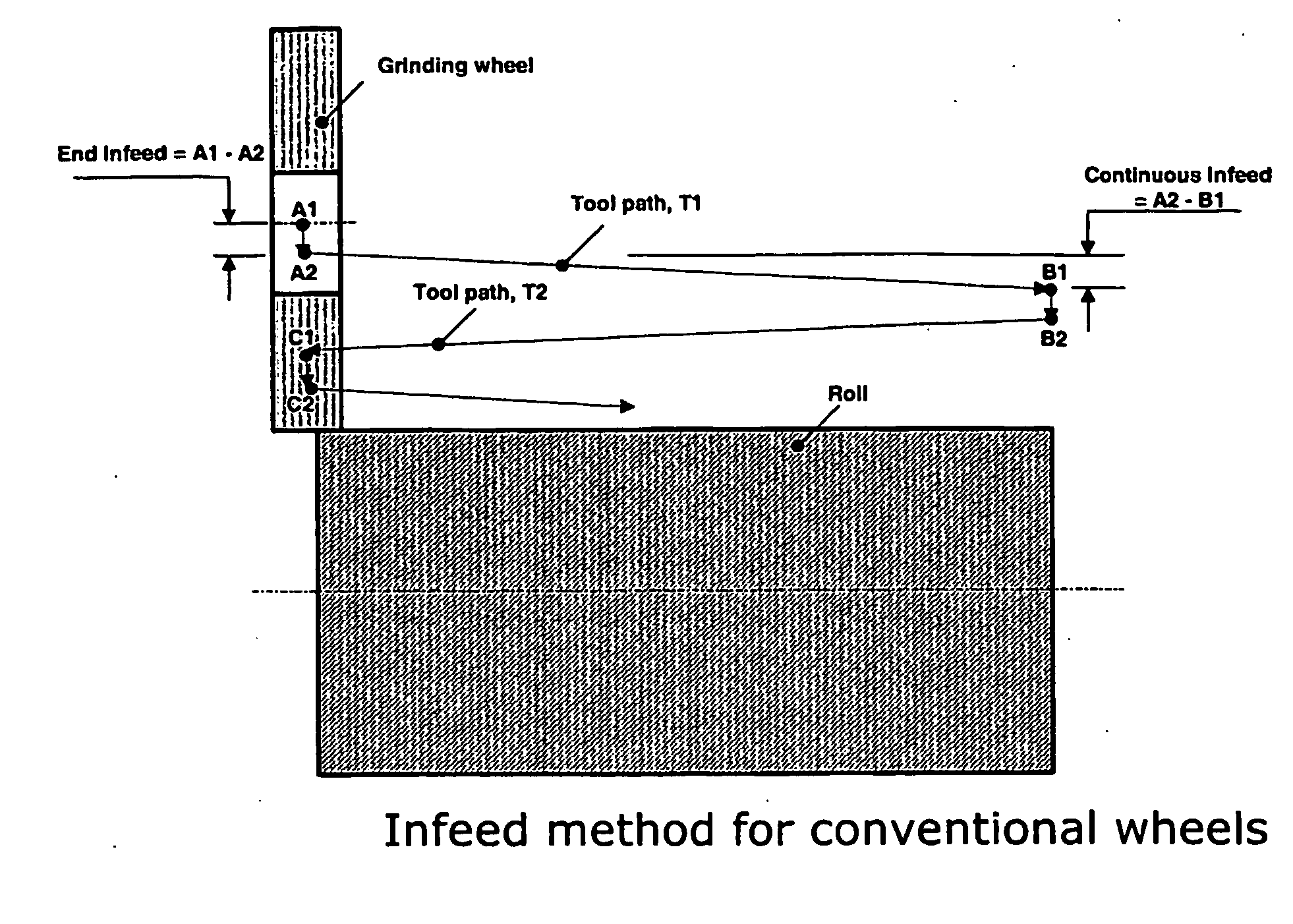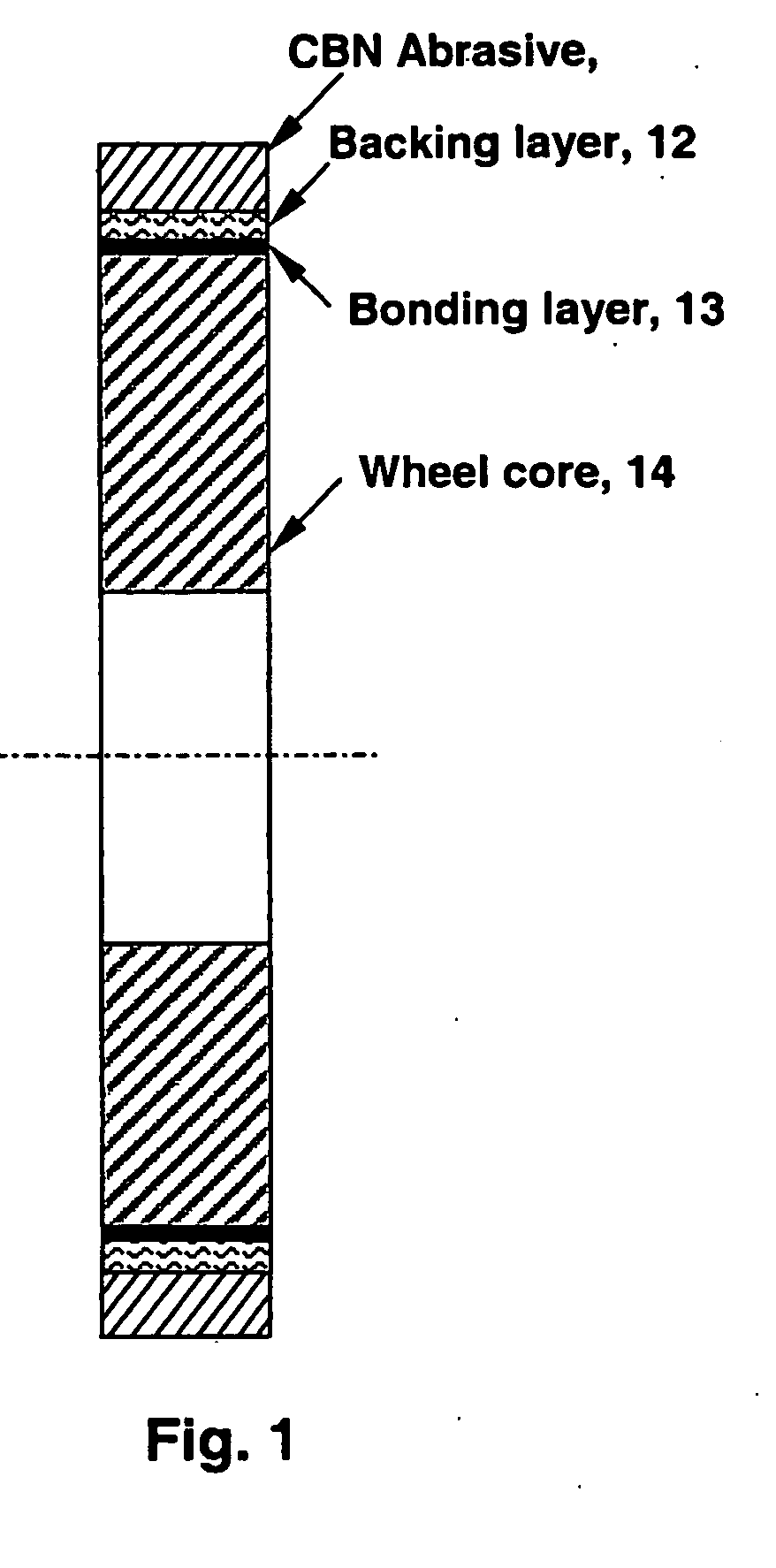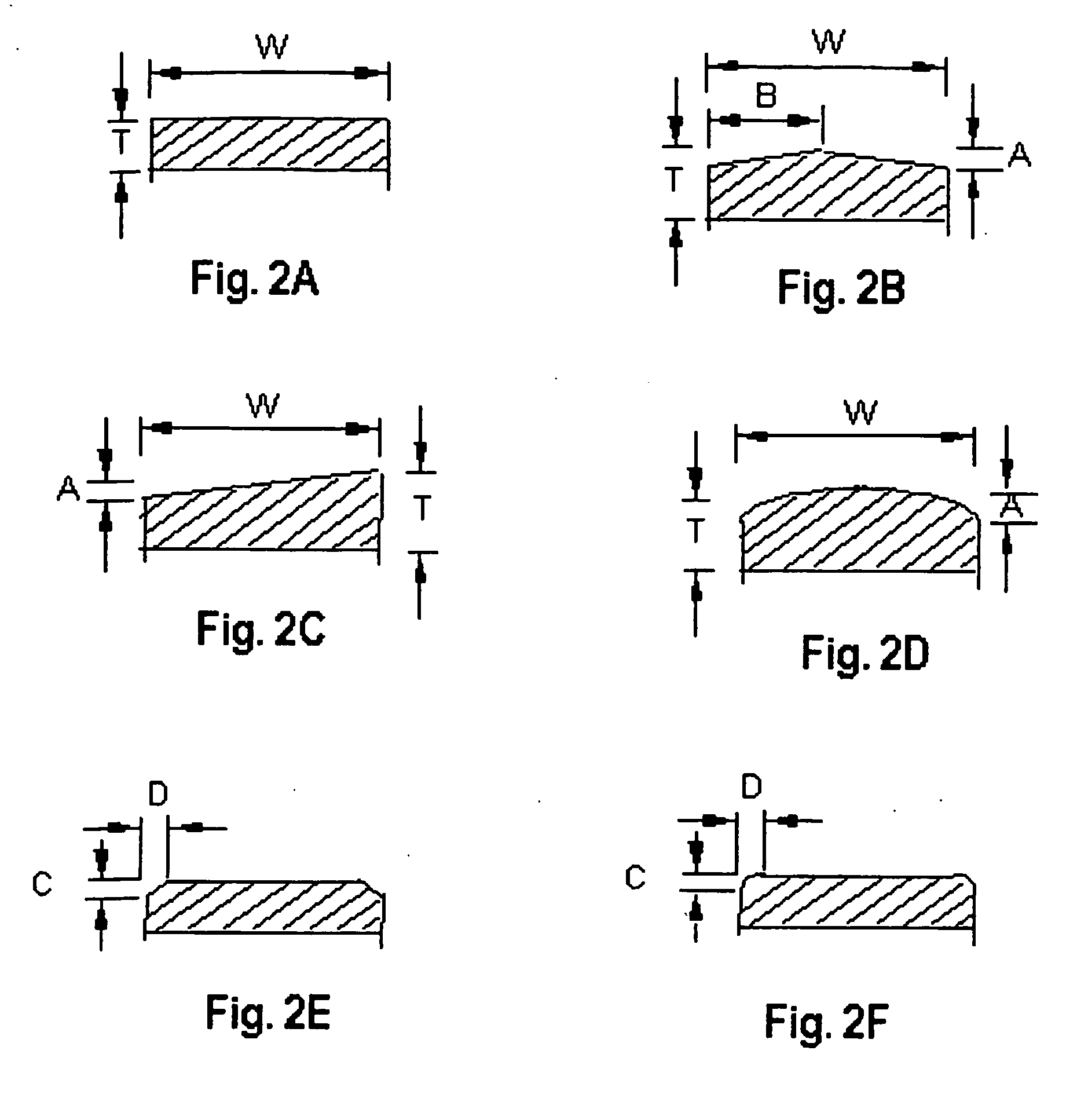Grinding wheel for roll grinding application and method of roll grinding thereof
a technology of grinding wheel and rolling pin, which is applied in the field of grinding wheel, can solve the problems of requiring periodic re-shaping, and affecting the quality of the finished product, and achieves the effect of constant speed ratio
- Summary
- Abstract
- Description
- Claims
- Application Information
AI Technical Summary
Benefits of technology
Problems solved by technology
Method used
Image
Examples
example 1
Grinding Performance of Iron Rolls
[0096] In this example, the roll grinding comparison tests are conducted on a 100HP Waldrich Siegen CNC roll grinding machine wherein the grinding wheel rotational axis is substantially parallel to the roll rotational axis, such that the angle is less than about 25 degrees. The dimensions of the iron roll are 760 D×1850 L, mm. A synthetic water soluble coolant at 5V % concentration is applied during grinding. The coolant flow rate and pressure conditions are the same for the conventional wheel and the vitrified CBN wheel in this evaluation. The hardened iron rolls have a radial wear amount of 0.23 mm that has to be corrected in the grinding operation such that the taper tolerance is less than 0.025 mm and profile tolerance is less than 0.025 mm. The grinding conditions for the comparative conventional wheel and the vitrified CBN wheel are nearly equivalent for wheel speed, traverse rate, work speed and depth of cut per pass. The grinding results ar...
example 2
Grinding Performance of forged HSS Rolls
[0099] In this example, the same wheels in Example 1 are used to grind a forged HSS work roll having a complex polynomial profile along the axis of the roll.
[0100] The wheels are not trued and are continued in the same condition after grinding the hardened iron rolls on the same grinding machine. The HSS work rolls have an initial radial wear of 0.030 mm and have to be ground such that the taper and profile shape tolerances are less than 0.025 mm. The grinding conditions in terms of the wheel speed, work speed, traverse rate and depth of cut are equivalent for both the comparative wheel and the vitrified CBN wheel. The dimensions of HSS roll used are 760.5 D×1850 L, mm.
[0101] The grinding conditions and results are given below in Table 3.
TABLE 3Comparative wheelVitrified CBN wheelC-1CBN-1, CBN-2, CBN-3Grind ParametersRoll materialForged HSS, 80Forged HSS, 80SHCSHCTT / WWC0.5-5>2000# of work rolls44groundGrinding Results:Avg Stock removed0.3...
example 3
Chatter Suppression Method for a Vitrified CBN Wheel
[0104] In this example, the effect of wheel rotational speed variation to the vitrified bonded CBN wheel during the grinding process to suppress chatter is demonstrated. Since the inorganic vitrified bond CBN system typically has a high E-modulus (10-200 GPa), compared to the prior art organic resin bonded wheels (E-modulus between 1-10 GPa) and the rate of wear of CBN wheel of the invention is quite low, the machine harmonics due to self excited vibration during grinding are readily observed in the roll as chatter marks at distinct harmonic frequencies of the machine system.
[0105] As illustrated in FIGS. 5A-5C, Applicants have surprisingly discovered that it is possible to avoid discernible chatter marks by dissipating the harmonic amplitudes over a wider frequency spectrum, instead of being concentrated at certain frequencies.
[0106] In one example, a piezoelectric accelerometer is mounted on the grinding machine spindle bearin...
PUM
| Property | Measurement | Unit |
|---|---|---|
| length | aaaaa | aaaaa |
| diameter | aaaaa | aaaaa |
| angle | aaaaa | aaaaa |
Abstract
Description
Claims
Application Information
 Login to View More
Login to View More - R&D
- Intellectual Property
- Life Sciences
- Materials
- Tech Scout
- Unparalleled Data Quality
- Higher Quality Content
- 60% Fewer Hallucinations
Browse by: Latest US Patents, China's latest patents, Technical Efficacy Thesaurus, Application Domain, Technology Topic, Popular Technical Reports.
© 2025 PatSnap. All rights reserved.Legal|Privacy policy|Modern Slavery Act Transparency Statement|Sitemap|About US| Contact US: help@patsnap.com



